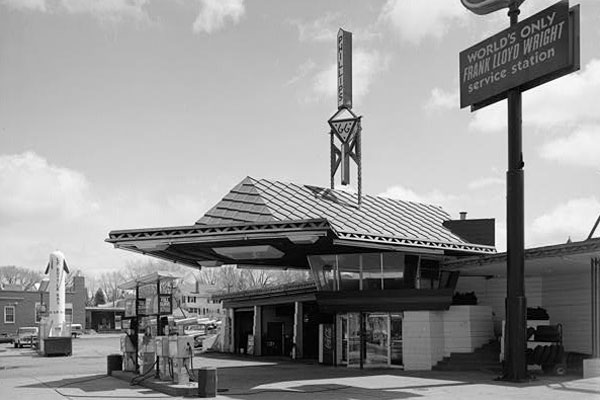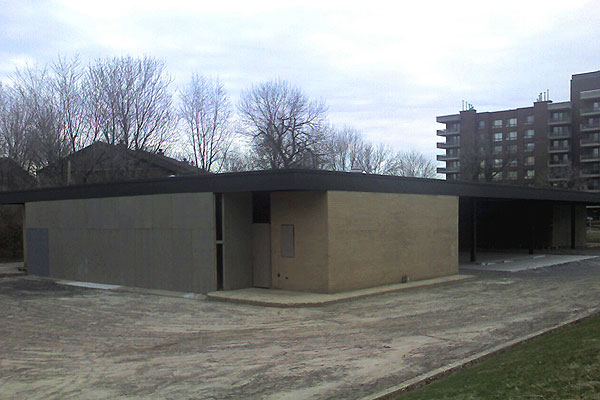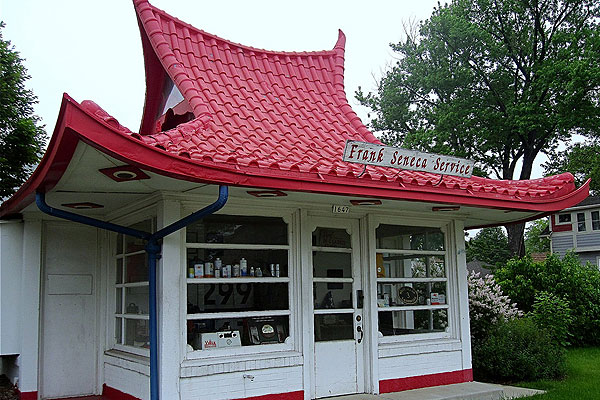
One of Frank Lloyd Wright’s most ambitious plans, proportional to if exactly the conceptual opposite of his mile-high skyscraper, was Broadacre City, the suburban ideal of his Usonian vision: an automobile suburb combined with the Homestead Act. As James Krohe Jr. describes it in relationship to Chicago:
Broadacre City today is usually dismissed as a rationale for sprawl. In Broadacre City, writes historian Peter Hall, Wright wove together virtually every strand in American antiurbanist thinking. In fact, Wright had proposed not a new kind of suburb but a new kind of city. Wright deplored the suburban expansion already underway, by which the 19th century industrial city he hated—of which Chicago was the American archetype—appropriated the countryside. Wright was inspired to invective by Chicago the way Vachel Lindsay was inspired to verse by the flowerfed buffalo. His Broadacre City was not a city set in the countryside, a la Ebenezer Howard’s turn-of-the-century Garden City concept. Rather, it was the countryside converted into a city that would be an improvement on both. No mere dormitory, its spreadout parts would compose an urban whole, with each family enjoying access to small farms, orchards and recreation areas, but with light industry and other urban facilities all within 10 to 20 miles of their house.
[snip]
Usonia was based not on cooperation but fierce individualism. Here he was more in touch with the average American than was the patrician Daniel Burnham or the communalist Jens Jensen. Broadacre City offered a means by which ordinary Americans might live in what the great urbanist Lewis Mumford called "romantic isolation and reunion with the soil" while enjoying urban economic opportunities and recreations. Broadacre City was Wright’s White City, certainly, but one that owed as much to Dan’l Boone as to Dan’l Burnham.
It was an odd concept—central planning plus reactionary suburbanization—and, obviously, never happened, even if it did physically anticipate mid-century urban development. Nonetheless, it’s poetic that one of the few aspects of Broadacre that ever actually got built was a gas station: the Lindholm Gas Station (now Terry’s Best Service) in Cloquet, Minnesota. And it’s getting a renovation.

In related news—like, literally, news about gas stations designed by legends of Chicago architecture getting renovated—Ludwig Mies van der Rohe’s Esso station in Montreal is also getting a renovation; it’s been boarded up since 2008. Those of you who are familiar with his work will no doubt be surprised that his style translates seamlessly to a gas station. Here‘s what it looked like shortly before it was shut down.
Less ambitious, but closer to home: Wadham’s Gas Station in West Allis, Wisconsin:

One of a hundred-some "teahouse" stations built by Wadham’s Oil and Grease Company beginning in 1917—this one’s from 1927, and unfortunately not as spectacular as the Wadham’s in Milwaukee–and pretty much the opposite of the Wright ideal.
Photographs: Library of Congress; Montrealis; ChicagoGeek



